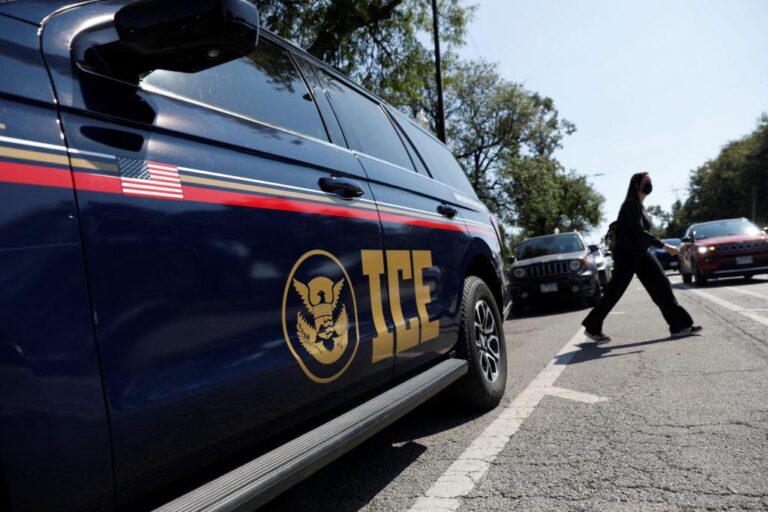Examining Federal Law Enforcement Operations in Major U.S. Cities: Impacts, Legal Boundaries, and Community Relations
Overview of Federal Law Enforcement Presence in Urban Areas
In recent years, the deployment of federal law enforcement personnel in metropolitan areas such as Chicago, Portland, and Memphis has sparked widespread public discourse and scrutiny. These interventions, often initiated to address rising crime rates and protect federal properties, have revealed a complex balance between maintaining public order and respecting civil rights. This article delves into the multifaceted nature of federal law enforcement activities in these cities, highlighting their goals, community reactions, and the legal frameworks that govern their operations.
Community Impact and Public Perception of Federal Interventions
The introduction of federal agents into city environments has led to a spectrum of responses from local populations and officials. While the primary mission of these agencies is to curb criminal activity and safeguard infrastructure, their presence has sometimes intensified community tensions. Residents frequently report feelings of increased surveillance and express concerns over aggressive enforcement tactics, which can erode trust between law enforcement and the public.
Notable effects observed include:
- Heightened clashes during demonstrations, resulting in more arrests and injuries
- Coordination difficulties between municipal police forces and federal operatives
- Growing unease among neighborhood residents due to intensified law enforcement visibility
- Polarized opinions on the success and appropriateness of federal involvement
| City | Federal Agency | Main Objective | Community Reaction |
|---|---|---|---|
| Chicago | Department of Homeland Security | Crime reduction initiatives | Public protests demanding openness |
| Portland | U.S. Marshals Service | Protection of federal buildings | Large-scale demonstrations and legal opposition |
| Memphis | Federal Protective Service | Securing government facilities | Community apprehension regarding enforcement methods |
Legal Boundaries and Operational Guidelines for Federal Agents in Cities
Federal law enforcement officers operating within urban jurisdictions must comply with a complex set of legal standards designed to uphold constitutional protections while enabling effective crime control. Their authority is derived from federal legislation that permits intervention in interstate criminal activities and threats to national security. However, this power is circumscribed by laws such as the Posse Comitatus Act, which restricts military involvement in civilian law enforcement, and by mandates requiring collaboration with local police to honor state sovereignty.
Key regulatory principles include:
- Requirement for Warrants and Probable Cause: Except in urgent situations, federal agents must secure judicial authorization before conducting searches or arrests.
- Use of Force Restrictions: Protocols are in place to ensure force is applied judiciously, prioritizing de-escalation and accountability.
- Transparency and Oversight: Federal agencies are subject to reporting obligations and supervision by inspector generals to monitor compliance and conduct.
| Legal Instrument | Purpose |
|---|---|
| Federal Statutes | Empower examination of crimes crossing state lines |
| Posse Comitatus Act | Prohibits military enforcement in civilian matters |
| Departmental Policies | Govern conduct and regulate use of force |
| Judicial Oversight | Mandates warrants and probable cause for enforcement actions |
Obstacles in Collaboration Between Local Authorities and Federal Agencies
City leaders often face notable hurdles when working alongside federal law enforcement units. A major challenge is the limited transparency and delayed communication, which hinder the development of unified strategies to enhance public safety. Divergent priorities-where local officials emphasize community engagement and federal agencies focus on broader security objectives-can create friction and reduce operational effectiveness.
Resource management and command hierarchy also present difficulties. Federal deployments typically bring specialized personnel and advanced equipment, which can overshadow local law enforcement efforts and blur lines of authority.
| Coordination Element | Local Officials’ Priorities | Federal Agencies’ Priorities |
|---|---|---|
| Information Exchange | Timely updates with community impact focus | Controlled dissemination of sensitive intelligence |
| Operational Leadership | Community-oriented policing strategies | Mission-centric enforcement actions |
| Resource Deployment | Cost-effective local resource use | Maximizing federal assets and capabilities |
- Political pressures from constituents demanding accountability frequently enough conflict with federal agencies’ need for investigative discretion.
- Legal jurisdictional differences between city and federal authorities create ambiguous enforcement zones, complicating consistent law submission.
Strategies to Improve Transparency and Accountability in Federal Enforcement
To build public confidence and ensure responsible conduct, federal law enforcement must adopt enhanced transparency practices. This includes routinely publishing complete reports detailing the scope, objectives, and legal basis of their operations. Effective transparency initiatives might involve:
- Mandatory disclosure of civilian encounters
- Timely release of body-worn camera and surveillance footage, where legally permissible
- Establishment of accessible channels for community input and autonomous audits
Accountability mechanisms should safeguard civil rights while enabling law enforcement to perform their duties effectively. Recommended measures include:
- Independent oversight bodies empowered to investigate complaints against federal personnel
- Ongoing training focused on de-escalation techniques and cultural awareness
- Clear disciplinary processes with publicly available outcomes to ensure transparency
| Recommendation | Benefit | Target Timeline |
|---|---|---|
| Regular Public Operational Reports | Enhances community trust and understanding | Within 6 months |
| Creation of Independent Oversight Committees | Ensures impartial review and accountability | Within 1 year |
| Ongoing Release of Body-Camera Footage | Promotes transparency in law enforcement interactions | Continuous |
Looking Ahead: Navigating the Future of Federal Law Enforcement in Cities
As federal law enforcement operations continue to evolve in cities like Chicago, Portland, and Memphis, it is indeed vital for residents, policymakers, and local authorities to stay informed about their implications. Balancing effective crime prevention with the protection of civil liberties requires ongoing dialog, oversight, and cooperation. Continued monitoring and analysis will be essential to fostering safer communities while upholding democratic principles.
For the latest updates and comprehensive coverage on this topic, follow trusted news sources and official reports.





